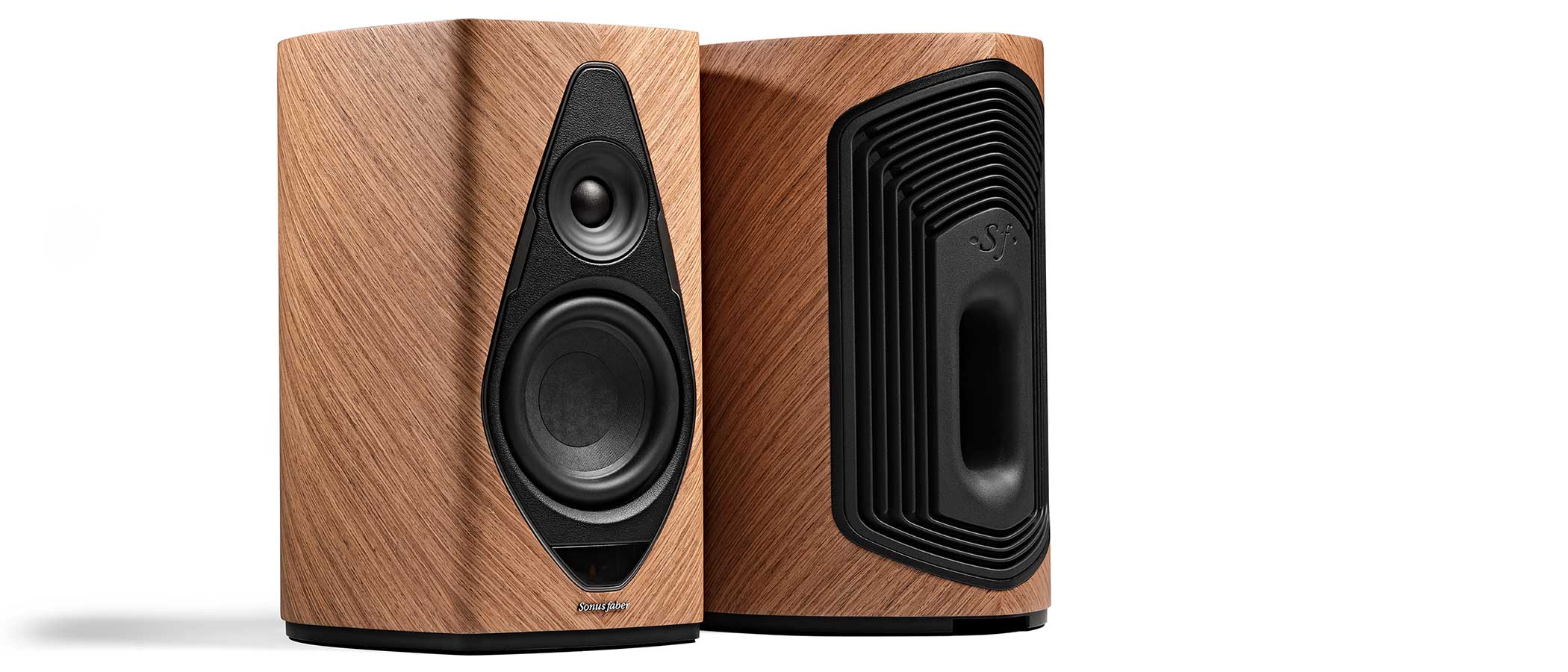Sound+Image Verdict
The Duetto speakers sound fantastic, and they nail the active speaker brief in a highly consumer-friendly way – targeting the same buyers as the company's all-in-one Omnia, but here with two boxes and so true hi-fi stereo performance
Pros
- +
Well-implemented wireless speaker
- +
Gorgeous sound
- +
Great looks
Cons
- -
No direct input selection (yet)
- -
Can’t defeat auto power down
- -
‘Hidden’ settings
Why you can trust What Hi-Fi?
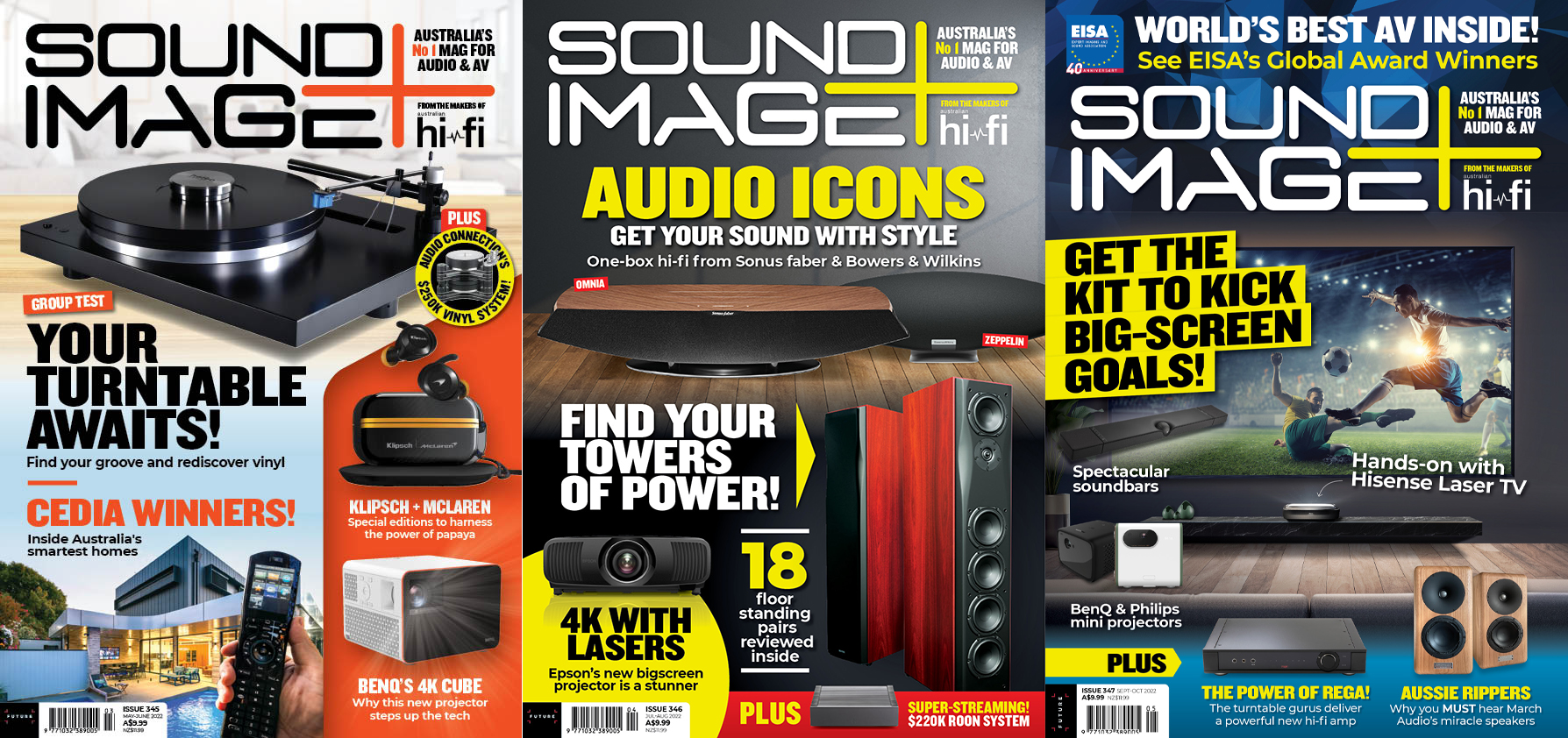
This review originally appeared in Sound+Image magazine, Australian sister publication to What Hi-Fi?. Click here for more information on Sound+Image, including digital editions and details on how you can subscribe.
When we first visited Sonus Faber's product page for the Duettos (they've since changed it), it was led by an artily faded image of a young couple facing a pair of these luxurious-looking speakers, which are on their dedicated stands flanking a leafy bay window. The couple are touching, apparently held rapt by the music, although they might possibly have just nodded off.
Anyway, superimposed over all this is a block of text with the company’s first statement about the Duettos, which read: “The sound of Sonus faber, now wireless”.
And really that’s the story here in a neat nutshell. We were worried for a while that we might find little more to add... everything else is just detail, really.
Although of course that assumes you know what they mean by ‘the sound of Sonus Faber’, and there’s quite the tale of Italianate artisan craftspersonship behind that.
And then there’s that wireless bit. Wireless speakers, they’re pretty exciting in themselves, a potential all-in-one system solution, with the amps and streaming all built into the speaker boxes. The word ‘wireless’, of course, means they can receive signals through the air without cables – though wireless is a generic term, not telling you what specific technologies are available for the wireless music transmission, nor crucially how the speakers talk to each other, which is equally important in terms of the final quality available from the system.
So does wireless here mean Bluetooth? Or perhaps wi-fi?
Well for some of the stuff here, wireless means something else entirely, something new for consumer hi-fi products.
Because for the communication between the two speakers, the Duettos use Ultra WideBand transmission (UWB). And that’s something we've been waiting for.
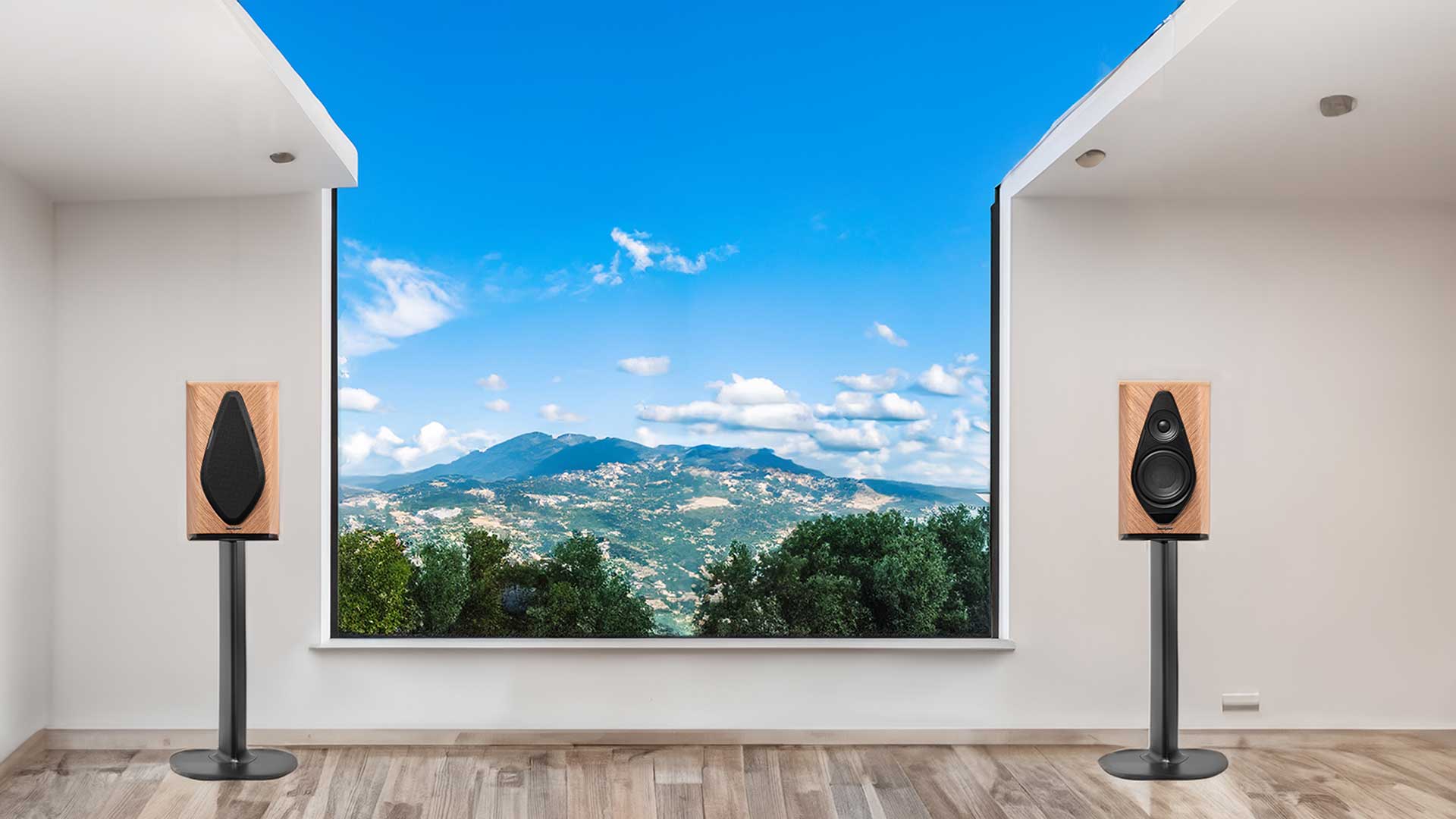
Build & design
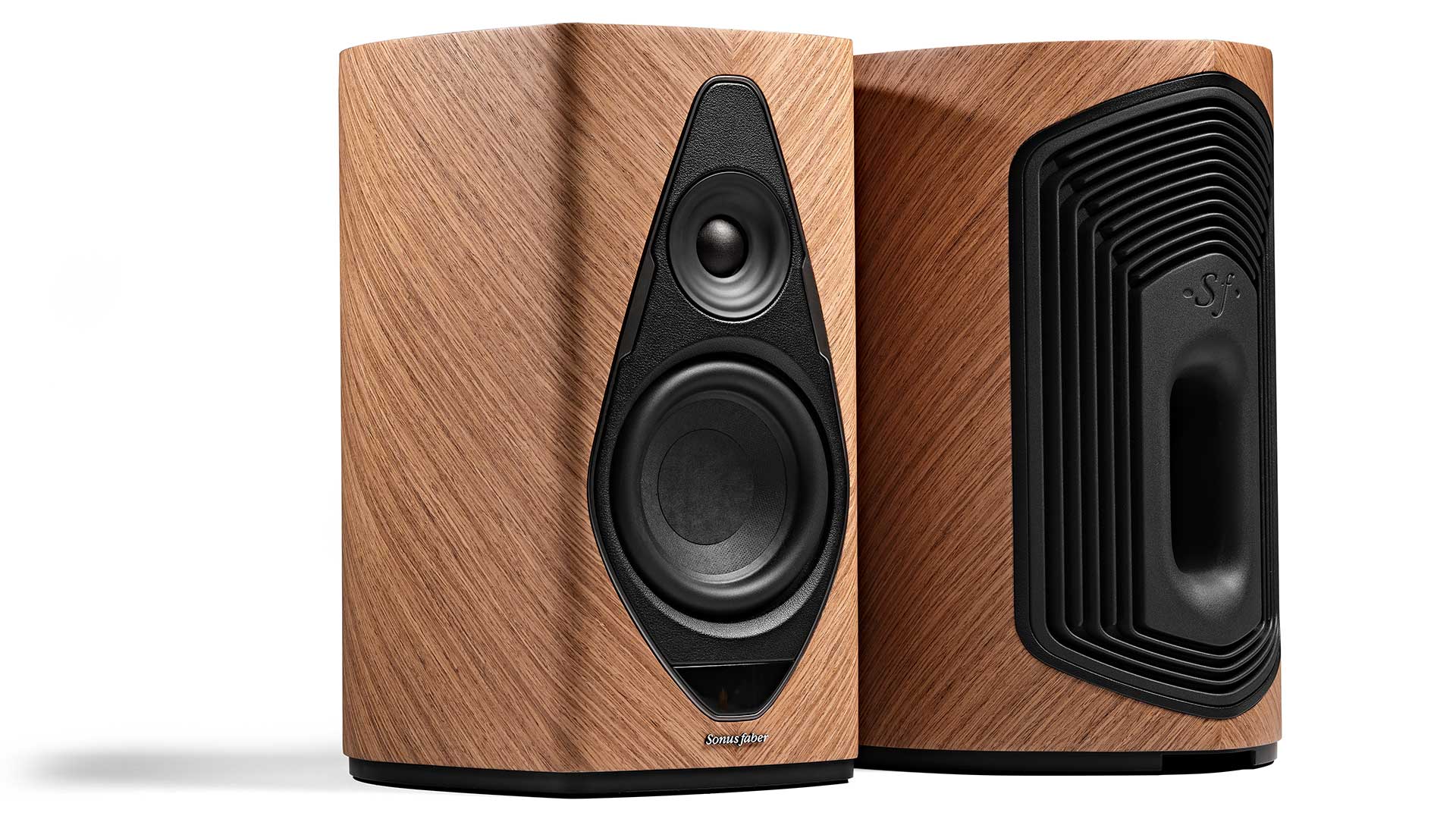
Type: 2-way vented box
Inputs: RCA line/phono in, optical digital, HDMI eARC/ARC, Ethernet, Wi-Fi, AirPlay 2, Chromecast, Spotify Connect, Tidal Connect, Roon, Bluetooth (SBC, AAC, aptX HD)
Outputs: subwoofer
Drivers: 28mm silk-dome tweeter, 133mm long-excursion woofer
Crossover: 1900Hz
Quoted frequency response: 37Hz–30kHz
Amplifiers: 2 x 100W Class-AB, 2 x 250W Class D (no envelopes stated)
Dimensions (whd): 340 x 210 x 280mm (108cm high on dedicated stands)
Weight: 6.8kg (master); 6.45kg (satellite)
Before we get all gooey over UWB, however, let’s get hands-on with the physical Duettos and see how they use more conventional Bluetooth and wi-fi to access your music, before using that UWB to spread it around.
It’s almost redundant to say that these are beautiful loudspeakers because they’re Sonus Fabers; the company doesn’t make anything else.
Up in the rarefied air of Arcugnano, a town in the province of Vicenza, Veneto, north-eastern Italy (also home to Bertagni, Italy’s oldest filled-pasta producer), Sonus Faber has a four-decade history of making artisan-style speakers back to the early designs of Franco Serblin. Its factory is a wondrous mix of traditional skills and new technologies, where over the last decade or so Sonus Faber has been part of first the Fine Sounds Group and, since 2015, the McIntosh Group, alongside Sumiko cartridges and McIntosh itself.
But this seems to have little affected Sonus Faber’s Italian approach; indeed the wider funds may have helped this, as in 2021 when it acquired De Santi Woodmaker, a family-run carpentry business with which the company had already enjoyed a 35-year collaboration, bringing these “two leading ‘Made in Italy’ realities” under the same roof.
These skills, this legacy, are evident in the appearance of the Duettos even before you plug them up and start playing. One common characteristic of the brand is what Sonus Faber calls a ‘lute-shaped”’ cross-section, here the shape of the leather-covered top panel (pictured below). This shape is said to serve both aesthetic and acoustic purposes, minimising internal standing waves and resonances within the cabinet, reducing coloration and distortion. The cabinet and custom-designed heatsink “guarantee timbre and musicality”, says Sonus Faber, which eschews mere neutrality in favour of its “signature Natural Sound”.
There are two finishes: the Walnut of our review pair, and a darker Graphite. On the gorgeous walnut finish, the wood veneers have been laid to put the grains at unusual opposing 45-degree angles, so meeting at 90 degrees above and below the diamond-shaped speaker baffle, the bottom of which the grain tracks near-perfectly. There are various warnings supplied about not cleaning the veneers and the leather top with aggressive chemical products (these apparently include lemon juice and wine); indeed don’t use any cleaning products, is the advice, other than Sonus Faber’s own Cleaning Kit available from distributors. Really, a regular wipe with a soft cloth should be enough.
The black combined diamond baffle is something we recall from a Sonus faber custom installation model, the PW-662, but it also mimics the combined baffles for tweeter and midrange on some of the company’s highest speakers, such as the Aida, Lilium and recent La Cremonese, though those use the company’s ‘Arrow Point’ DAD tweeter.
The two drivers here are lower in level but still both designed in-house. Silk domes are considered a hallmark of Sonus Faber’s ‘Natural Sound’, the 28mm tweeter backed by a ferrite magnet system with a copper cap on the pole. When the removable grilles are off you can see the dedicated waveguide in front of the tweeter, which aims for a broad dispersion pattern.
The mid/woofers are 133mm long-excursion paper-pulp cones, with neodymium magnet systems with copper caps and aluminium rings, housed within Sonus Faber’s new ‘Organic’ basket, designed to avoid symmetrical patterns and allow a non-disruptive airflow around the driver.
These are active speakers, of course, so there are amplifiers internally, four in total: one for each driver, all mounted within the crossover section. Each tweeter has a 100W (no envelopes stated) Class-AB amplifier, and each mid-woofer a 250W Class-D amplifier. To dissipate heat there’s a large ribbed heatsink that surrounds the port and dominates the rears of the speakers, so much so on the Master that you don’t initially see where the connections could all be. The answer is that they’re pretty much underneath.
The Duettos do have custom-designed stands; we didn’t have these for review but they should make the most of the speakers in terms of firm support as well as allowing neat cable management from this position below.
We should note that while Sonus Faber’s higher-end models are fully made in Italy, the Duettos are one of their more mass-market products and proclaim themselves to be ‘Designed in Italy; made in China’.
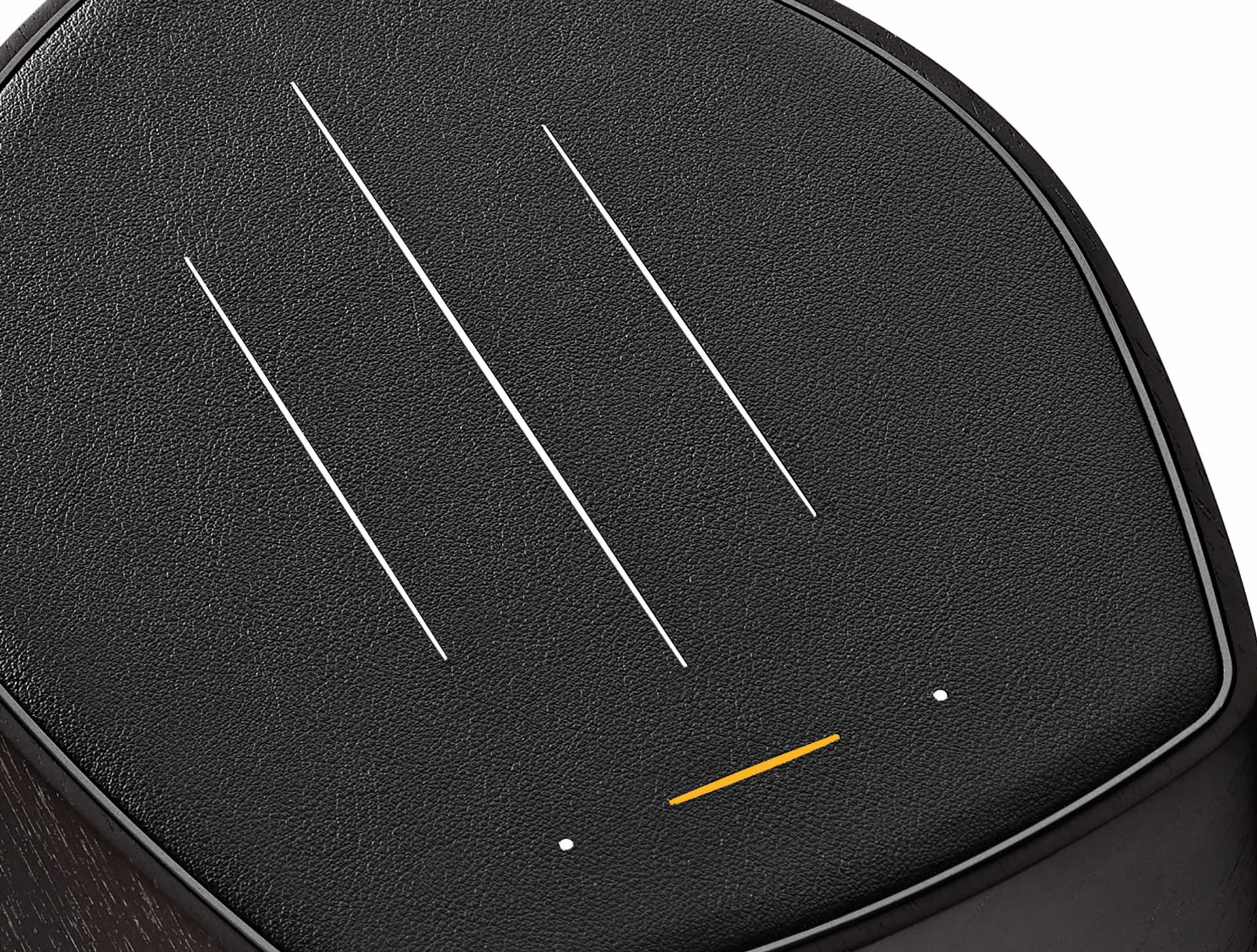
Control and inputs
The two speakers here are not the same: one is a Master, the other a ‘Satellite’ (such pairs used to be Master and Slave, but it would be a foolish company which retained that nomenclature today).
The Master has all the inputs to the rear/base, while its leather top panel (above) is sliced through with control strips and buttons, which are collectively called the ‘Senso’ system, inherited from the Omnia, the company’s award-winning one-box wireless speaker. We had not initially realised the very close connection between the Omnia and these Duettos – the same remote control, the same Senso controlling much of the streaming system. And that’s no bad thing, clearly, since we ourselves awarded the Omnia for its abilities and performance.
Still, we have found the Senso system a little less than instantly intuitive. The small front strip is touch-sensitive and changes colour to indicate the input. It can be used with the buttons on either side to control volume, input selection, play/pause and other functions.
The longer vertical strips are just LED Feedback Strips, more pretty than useful in our view, although during set-up the central strip animates to show a successful network connection, and flashes to show pairing between speakers. A leftward ripple indicates an update in progress (software updates should happen automatically, around 2am GMT apparently, so they might interrupt your lunchtime listening here in Australia); there is rightward rippling during a reset. The main strips go dark when the Duettos are muted and the small front strip flashes in white.
The trouble with colour being the indicator for input is the lack of other feedback on what is selected. Taking a quick tour of the inputs round the back, there’s HDMI (strip lights up orange), optical digital in (lights up magenta) and a single analogue RCA pair (pink) which can play from a line-level input or, at the flick of a little selector switch, a turntable equipped with moving-magnet turntable.
Then there’s streaming: the control strip goes blue for (you guessed it) Bluetooth, white for general streaming and specifically AirPlay, yellow for Chromecast, green for Spotify Connect, light blue for Tidal (also available in direct Connect form), and finally purple when addressed by Roon software (optional, pricey, but great).
Not finally purple, actually, because there’s a whole section in the manual entitled ‘I have a red control bar’. This is a colour you don’t want to see since it indicates a warning or error, and the manual section is there to help you work out what’s wrong.
Do you need to learn all these colours? We were going to say yes, or at least learn the ones you’re going to use, because there’s no other display to tell you what input is selected, nor does the remote control offer direct input selection. There’s handy browser access to some controls, but not input selection. We have a feeling the inputs might be intended to auto-trigger (to avoid selection altogether), but if that was the plan, it didn’t happen much.
Voice control? Siri could control AirPlay playback from an iOS device, and Google for Chromecast. But there’s no specific voice control of the Duettos themselves allowing input selection.
So if you want the HDMI input, you have to push the remote’s input button repeatedly until you see the top strip going orange, a tedious process, and from low seats you may not be able to see the speaker’s top light changing colour, so you’ll have to stand up.
However, help should be on the way. This will, we gather, be solved by an app which Sonus Faber shows on its website, but which isn’t yet ready for us, perhaps because of our privilege of an early pair to review. From what’s on the website, this app includes a clear input selection, which will be very helpful.
Also round the back is a line-level subwoofer output, an Ethernet socket for networking in preference to the Duetto’s inclusion of either 2.4GHz or 5GHz wi-fi, and a few press-stud buttons which can be used to switch Master-Satellite left/right positions, and to pair the speakers.
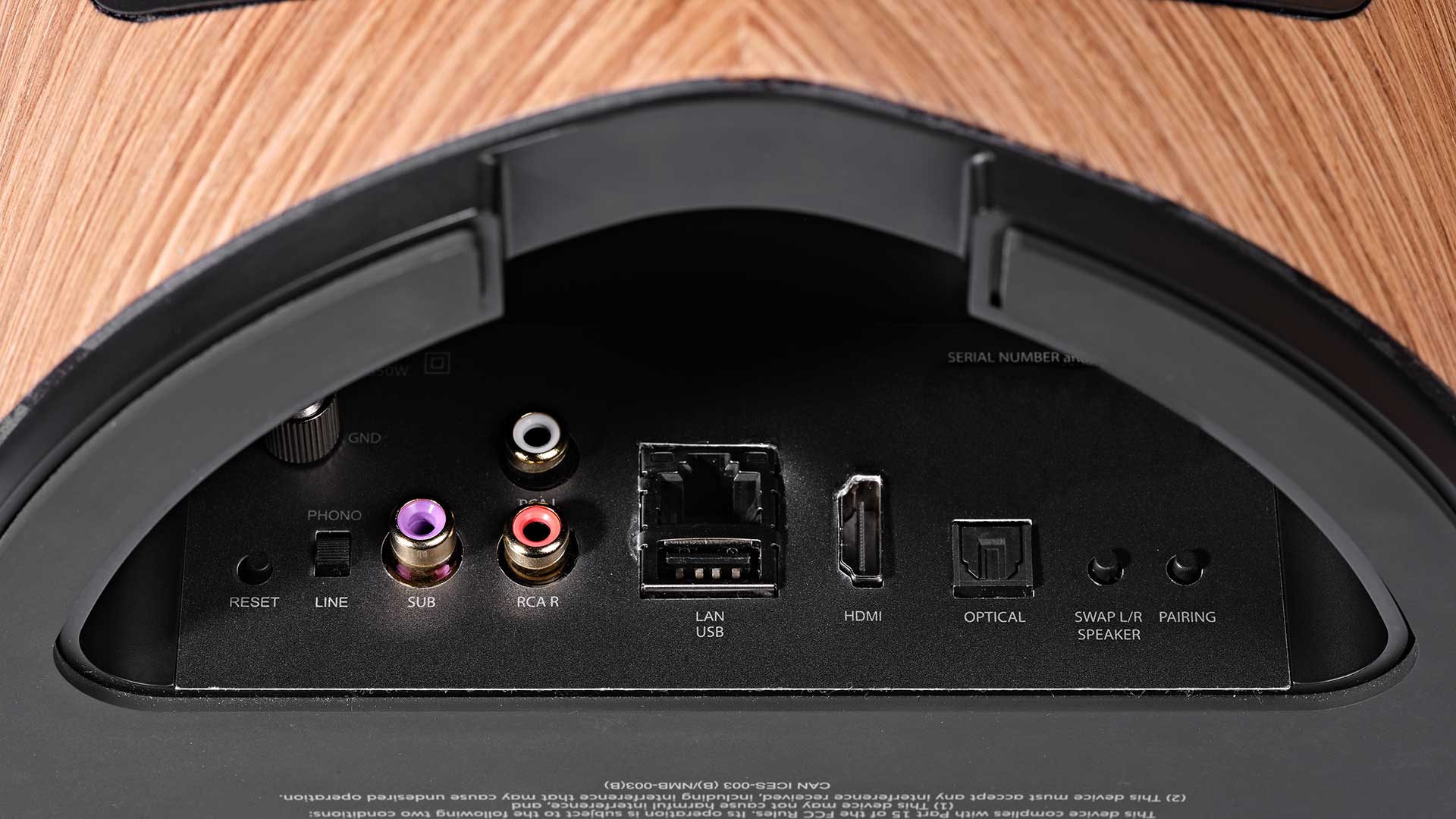
Ultra WideBand
So we’ve already seen two types of wireless connection here – firstly Bluetooth for music streaming (which supports SBC, AAC, aptX and aptX HD codecs), and secondly wi-fi, which links to your home network and thereby to the internet, allowing various types of music streaming to take place.
A third type of wireless connection takes care of communications between the Master and Satellite Duettos, and it is Ultra WideBand, a potentially game-changing wireless technology which we are seeing in a wireless audio context for the first time here.
This will be interesting if you happen to live in Indonesia, Russia, Ukraine or one of the various Turkic countries which still don’t allow any use of UWB, and require it to be turned off even when only used for local location finding purposes in a smartphone.
The rest of us can enjoy the first UWB implementation for consumer hi-fi to have reached us. The chipset used here comes from Canada’s Spark Microsystems (we wrote about Spark in our UWB explainer), and transmission takes advantage of Ultra WideBand’s amazingly wide bandwidth. The breadth of transmission allows UWB to use low-level but carefully timed and very brief frames of information, delivered with absolute minimal latency. This need for careful timing synchronisation is currently a key development area for UWB in audio.
One day we may see UWB taking on Bluetooth to deliver genuine high-res wireless headphones; Spark’s chipset can supposedly handle uncompressed 24-bit/96kHz. For the Duettos, Spark is simply used to establish a strong, fast and robust wireless link between the two speakers – robust because UWB should not be affected by heavier wi-fi traffic, Bluetooth bursts, or anything else. UWB data passes freely through all such spectra.
Since it’s our first time with a UWB product, we were interested to note the warnings in the literature: “The passage of people or the presence of water between the Duetto units could compromise their wireless transmission.”
Take care positioning that aquarium, then! We did know that bodies can block UWB, as it’s a key issue being overcome for potential UWB headphone use; one solution comes from AntennaWare’s anti-body-blocking antenna designs.
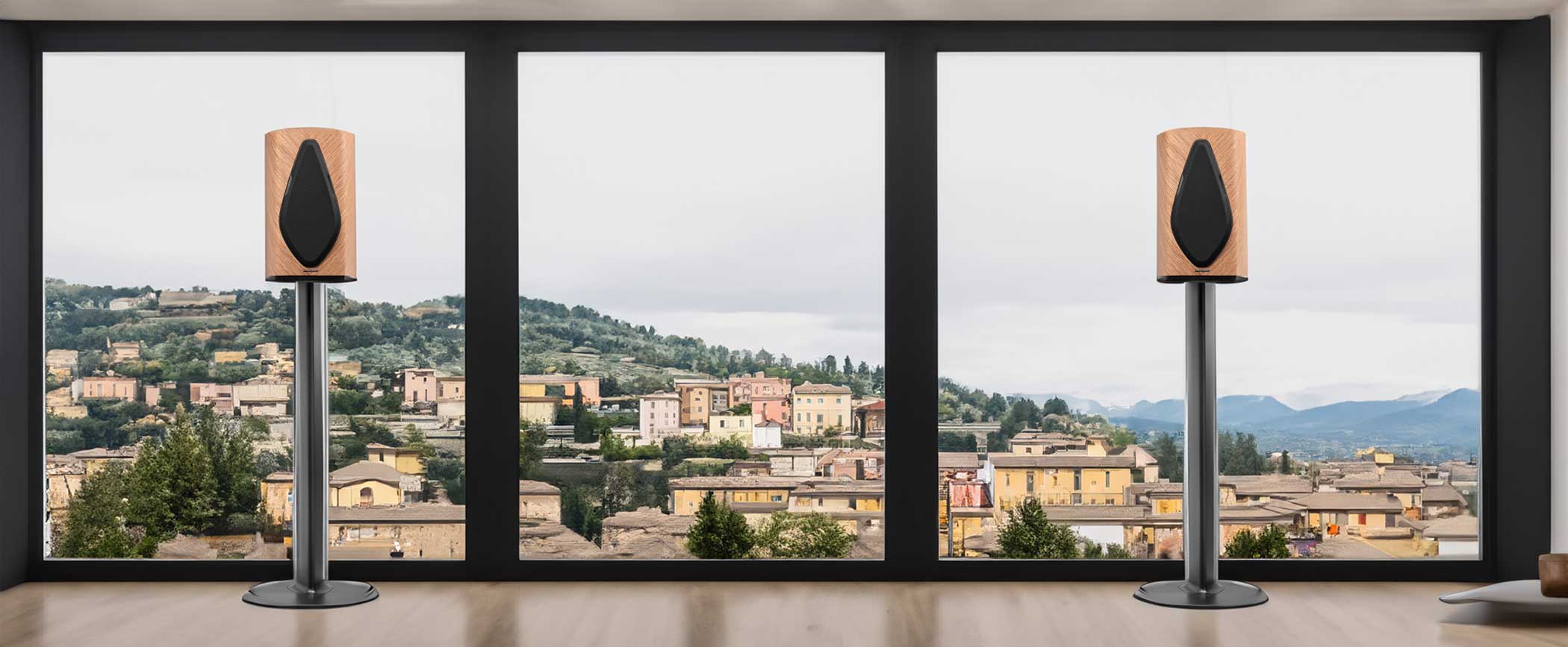
Set up
We’d seen the pictures, but until we unboxed the Duettos we hadn’t clocked the extreme tapering to their rear; that lute cross-section forms a Gothic arch to the back with a specific point to its apex. That makes the rear side of the speakers most unusual, with the heatsink curving away from the spine.
It’s weird to find no speaker terminals to the rear, but of course this is an active speaker. Yet you can’t see any other connections either – they’re all secreted away in quite a large hollow section underneath at the rear.
On the satellite speaker, this space has just a downfacing mains socket and a pairing button. On the master this space also hosts all the other connectors, and the space available is only just large enough, especially if you have a thick HDMI cable snaking in there. But the slot gap to the rear is just enough for good cable management, and of course if you have the dedicated stands, those cables can pass down to the floor that way.
As for positioning, Sonus Faber recommends a classic fully-toed-in triangle of a minimum of two metres, with at least 50cm of clearance on all sides, including the rear wall. Having said that, there is a setting available via the Duettos’ browser-based setting page (and maybe app-to-come) where you can select a “near the wall” option, which tames the bass a tad to adjust for such reflective support. Sonus Faber says there should always, however, be at least 10cm behind them.
By default, the Master unit is configured to be the right-side speaker, which was convenient for us, but it’s easy to switch them around using the button on the back of the Master. Another button pairs them, making that UWB connection – and we did need to pair them; they didn’t arrive pre-paired. The Master unit’s central LED strip flashes (rather briefly) when the pairing is complete.
You can get them connected to your home network in any of several ways. An Ethernet cable is the easiest, fastest and most reliable. But if you’re using an Apple phone or tablet, you can set them up on Wi-Fi as an AirPlay speaker, or use the Home app to add them to your home. If you’re more Android, you can use Google Home to add them and make them available for Chromecast. Both 2.4GHz and 5GHz wi-fi bands are supported.
We set them up as an AirPlay speaker; the phone initially told us this process had failed, but it hadn’t – the speakers were clearly now online and receiving streams from our phone.
We did later use the ‘Google Home set-up’ option, but then Google insisted on naming speakers after the room, forever naming them ‘Living Room speakers’ or whatever. That may be fine in your average home; it leaves our test facilities very confusing. Using Apple’s AirPlay allowed us to keep them named 'Duettos' (or specifically 'Duetto-56c9cd').
We also connected their HDMI socket to our 75-inch television’s ARC-equipped input and then positioned them flanking the screen. This HDMI input makes the Duettos ideal for TV and movie sound systems as well as music. If your TV doesn’t support ARC, then move to the optical digital connection instead, or analogue as your last resort.
We were pleased to see a QR code in the manual to access the web-based settings page – pleased because the previous Sonus Faber smart product, the Omnia all-in-one, had a ‘secret’ unmentioned web-based set-up page which we stumbled upon and found some EQ functions that could be accessed nowhere else.
It’s the same here, but this time better advertised! In addition to setting up the wi-fi connection etc., this web page (snapshotted below) again has more detailed equalisation settings – there’s a high-frequency slider adjusting HF gain from -2dB to +2dB, and a Loudness Maximizer which boosts the bass at low volume levels. There’s no way to toggle this on and off via the remote control or the unit’s own controls — and, critically, the Loudness is ‘on’ by default. This web page (and presumably the forthcoming app) is the only place you can change that.
You can also do that “near the wall” room placement if need be, adjust the balance between left and right, and – if using a subwoofer – adjust more complex subwoofer controls over cut-off, gain and delay.
With all our options selected, we left the Duettos on general music and TV duties for a week, before returning to have a critical listen.
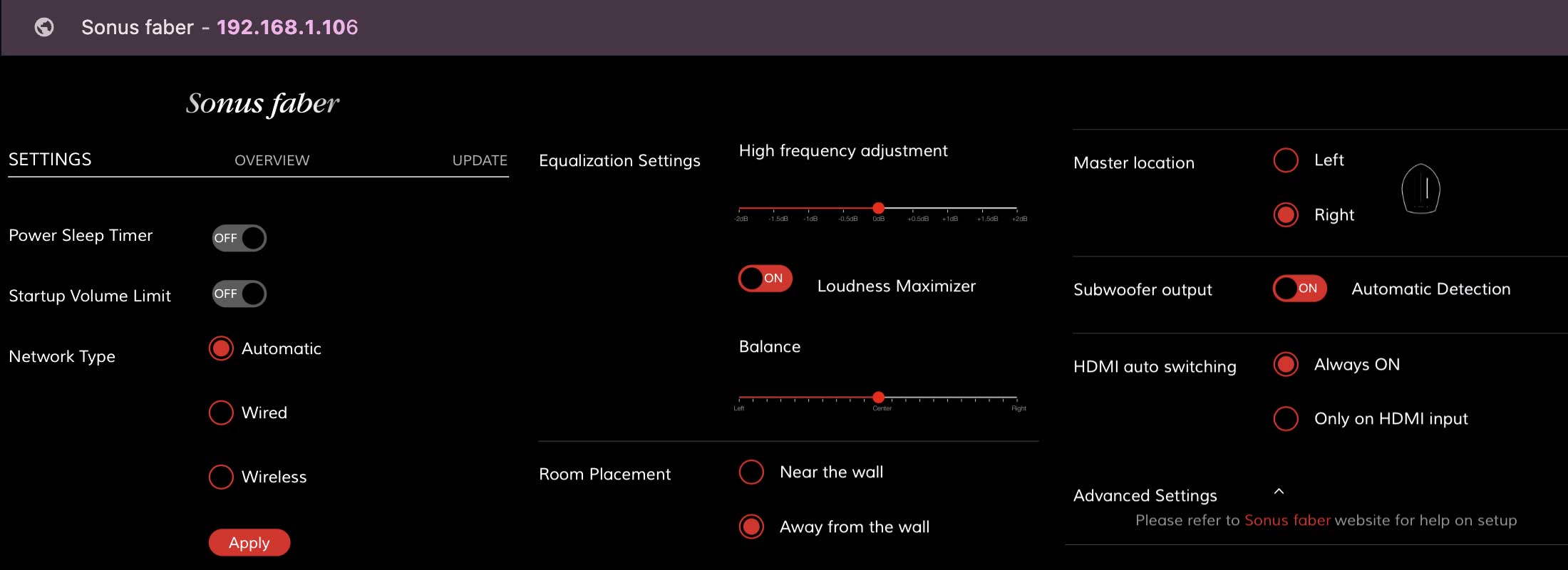
Sound
All this new technology – the amps and the streaming and the touch controls – it doesn’t matter how good and clever they are if the loudspeaker design on the end of it all were to turn out a dog. That would be quite the surprise from Sonus Faber, of course, and thankfully no, the Duettos are well up to the quality we’d expect from the company, although they depart from the company's usual slight reserve. The Duettos don't hold back.
Nor did we have to wait a week for them to come on song; only a couple of hours into our listening we were thrilling to the newly remixed and expanded Dylan Budokan concert from 1978, far improved over our grungy vinyl original: the newly-included track I Threw it All Away sounded contemporary and powerful through the Duettos, Dylan’s vocal clear, crisp and emotive in the centre, backing singers and then saxophone off in the right channel, and plenty of depth and power to support the rest of the band. Two entire new Dylan concerts to listen to! (As if we needed more.)
Peter Gabriel’s And Still (Dark-Side Mix) is a delicate piece with space and cellos, punctuated by a beautiful central violin motif. Through the Duettos there was no missing the slightest emphasis to Gabriel’s vocals, while we could expand the sense of space by adding volume pretty much as far as we might possibly wish, finding no obvious performance limit requiring us to stop.
This ability to play loud without cracking up proved a boon as our listening days extended. We later moved them up to a smaller space, positioned in almost the minimum recommended two-metre triangle, and wow they gained some energy up there. Tidal Connect served us a 2022 remaster of Take 13 for The Who’s Won’t Get Fooled Again, and after some studio chat the Duettos slammed out the song’s arrival in an absolute mirror smash of a soundfield, and didn’t let up thereafter, Entwhistle’s bass especially solid and nimble in the middle, no overdubbed Daltrey scream but a rogue Moon bash in the re-entry. This was a suitably huge presentation for a huge song, delivering musical moment after moment, including an almost comical runaway Baba O Riley-style race to the end.
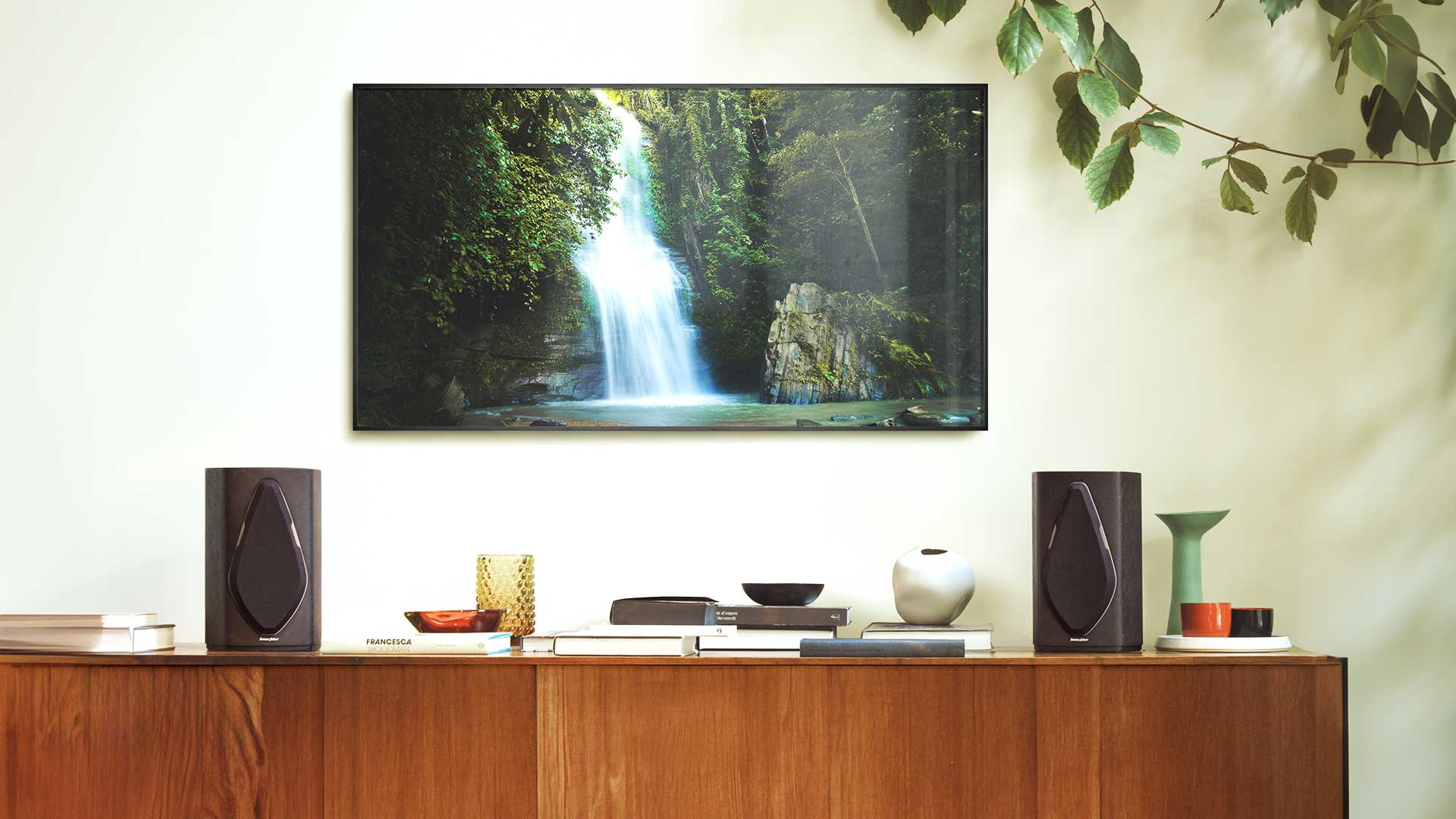
Another live track with which the Duettos went wild was the remastered live Dazed and Confused from Zeppelin’s ‘The Song Remains The Same’. Digital Zep is rarely as good as vinyl Zep, but this was something else, a massive and heavy presentation with the kick drum thumping so powerfully we had to reach out and touch our nearby subwoofer just to check it hadn’t somehow miraculously entered the signal chain, such was the solidity and depth of the sound. It was an extraordinary performance from speakers which are, after all, relatively slim and room-friendly.
The reason we had moved the Duettos into a different room was an extended problem in the original room where we had a Samsung TV plugged into them first via HDMI ARC, and then via optical. Either path proved unstable, not dramatically so but with just-audible glitches once every couple of seconds and a clearly-audible drop-out every 10 seconds or so. There were other glitches – sometimes a Tidal Connect stream would be initially skewed over to the left speaker, the Master quieter than the Satellite, a balance error which would correct itself to deliver a proper centre after a few minutes; really weird.
Further, things just sounded so much better upstairs that we wondered if those glitches were just the audible bits of a significant data-related quality drop. It’s very hard to tell what’s going on when a wireless link fails, and even harder if you suspect it of merely underperforming. Our glitching issue was duplicated on optical and HDMI inputs, with the skewing thing on Tidal too, so initially we were all for blaming the radical Ultra WideBand transmission system, and all the more so when we found the UWB signal to be blocked completely when we left our passive standmounts between the two Duettos.
We know that one of our test positions can suffer from a troubled Wi-Fi environment; we’ve had other wireless speakers struggle in the same location, though we’ve never worked out exactly why. But the point of UWB is that it’s supposed to be immune to busy environments. It should get through anything – except water, bodies and, apparently, other loudspeakers.
Up in the music room we were using the same cable, the same scenario but a Hisense A8KAU TV (and later a TCL Roku TV), and we never heard a glitch again. Things also sounded significantly better. So from that analysis, it looks more like some incompatibility was causing data issues from the Samsung TV.
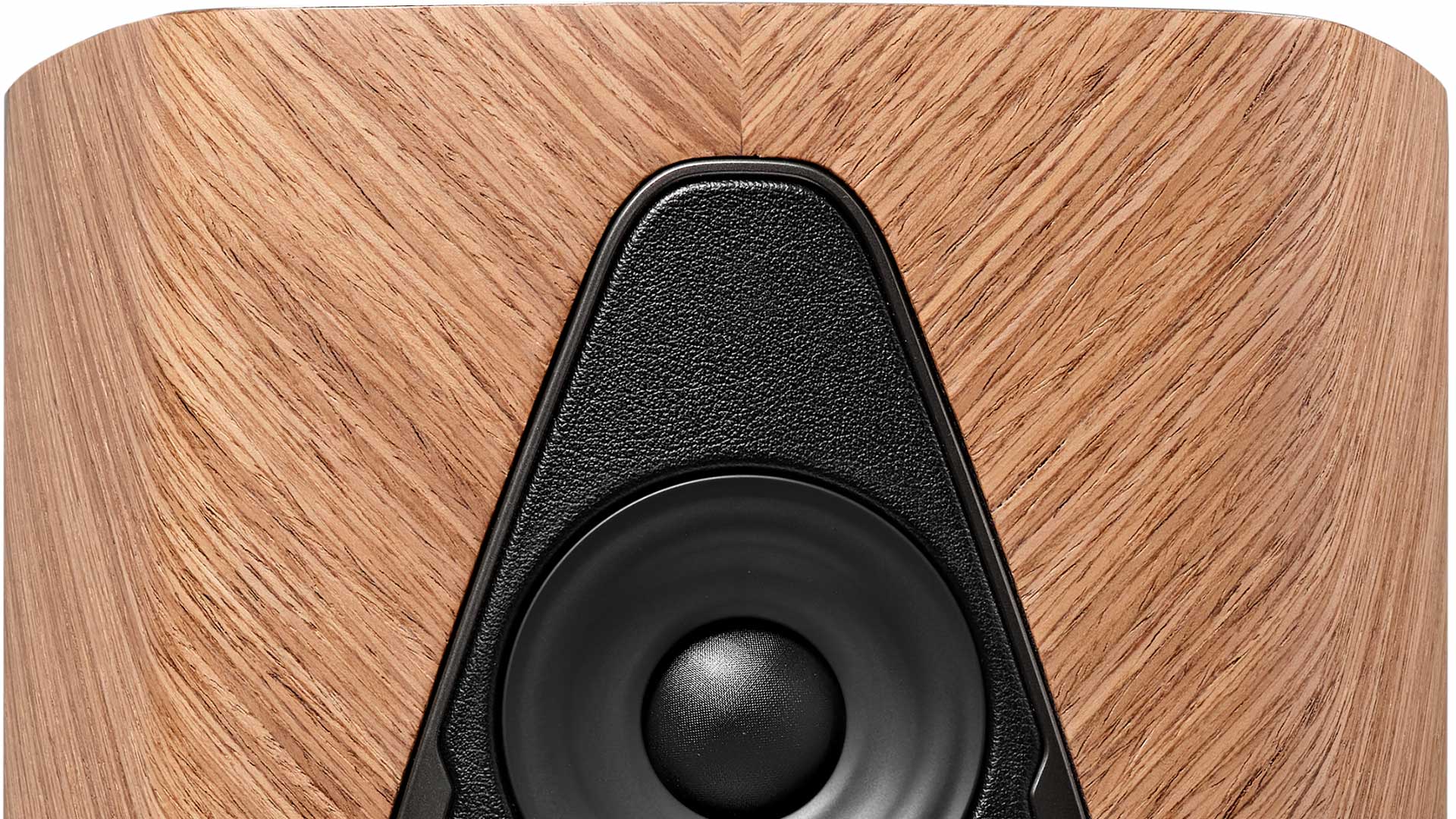
There was one very pleasing discovery during this move upstairs – how easy it was to switch the master speaker from being the right to the left. There is a press button on the back to achieve this, and you could check by sweeping the web/app balance control left and right. Then we noticed a simple toggle control in the browser window to switch them.
Not only easy to switch, then, but easy also to experiment any time with left-right reversal. All sorts of recordings get reversed before release, or between releases – Led Zeppelin’s ‘Mothership’ compilation for example. Should you know or notice, this software control is far easier than flipping cables; besides, hey, what cables would you flip on a streaming speaker?
How about that Loudness Maximizer? We found this a difficult call; its effect is not dramatic, and it’s supposed to operate primarily to raise bass levels when playing quietly, which is a good thing. But it can also add a small amount of flab even when listening up at reasonable levels. We were not pounding but certainly turning up Superstition by Stevie Wonder on Tidal Connect, and the bass was sounding a little over-rounded – we went to that web page, turned off the Bass Maximizer and the bass was instantly entirely natural, without that tiny sense of being forced. Same with Born To Run, same with Heart of Glass, same with lots of tracks. It’s also useful to turn it off when listening to True Crime TV where the soundtracks have constant low-frequency beds and pulses to ramp up the fear factor. Turning off the Maximizer dropped their insistence levels.
So we repeat what we said when the company’s Omnia did the same thing. Hiding EQ options is absolutely ridiculous, especially something like a bass boost. It should be on the remote control. At least the browser access is now in the manual, while hopefully the promised app will make the EQ’s existence more obvious and accessible.
Another thing that might go on the remote would be individual input selection. When we moved on to plugging in a turntable, we were delayed by having to go back to the manual to see what colour input we needed to choose for the analogue line/phono input – pink, that’s right. But is that light magenta or pink? Again the app’s input selection will make this far easier.
In addition, attaching anything to the Duettos requires up-ending them entirely to get at the connections bay, and it might be all too easy to finger a tweeter or driver when holding the speakers upside down. We found the connections to be best made by flipping the Master completely onto its leather top (put down a cloth first). It’s still not easy getting in a thick HDMI cable and potentially three analogue leads (fixing the turntable earth pin is particularly fiddly), and we twice reset the speaker accidentally while checking by ‘feel’ the position of the phono/line selector – the reset button is right next to it and requires only a momentary press. And the reset then requires re-pairing the two speakers with another button press under each speaker.
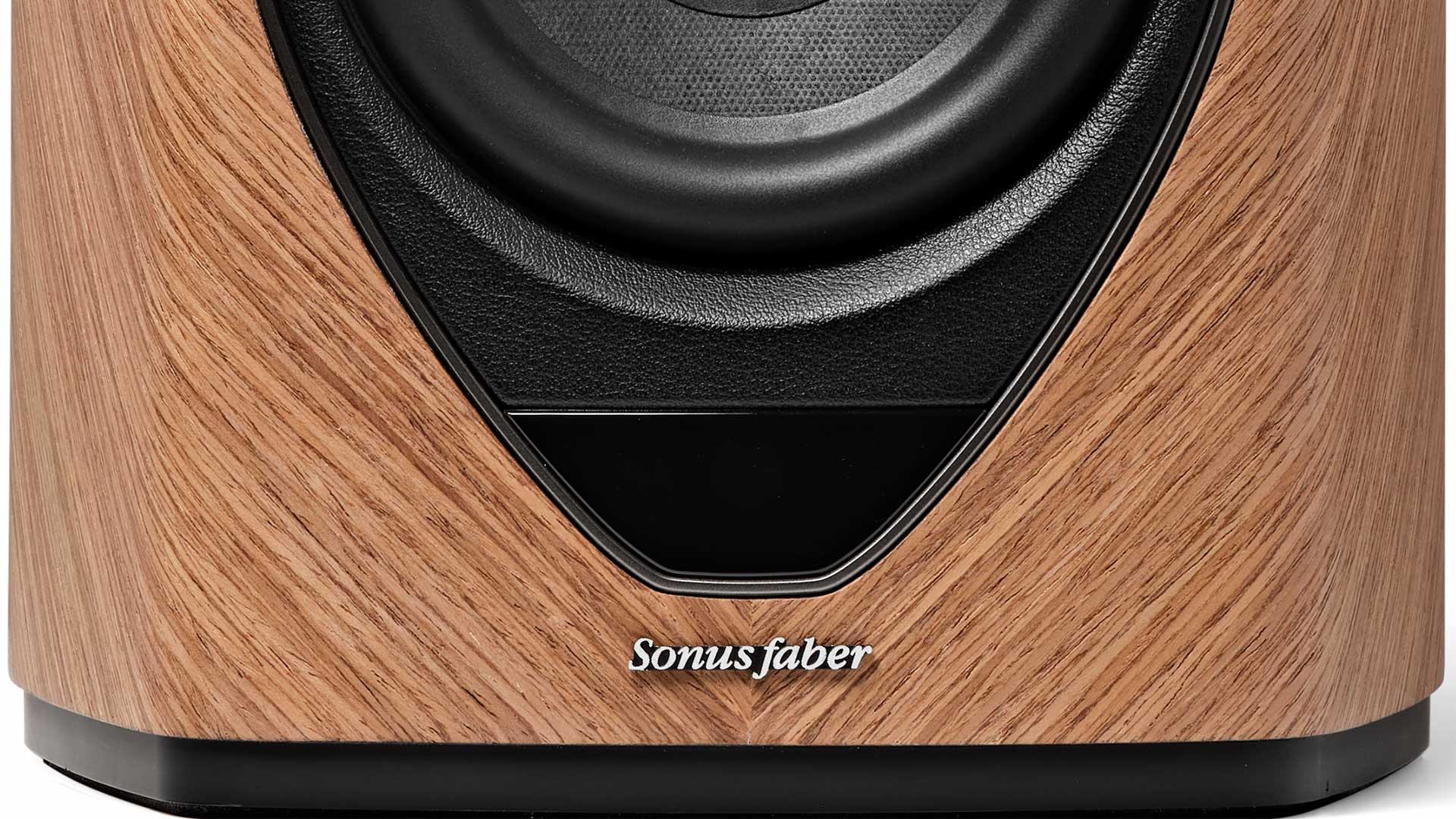
Still, this was all instantly successful, so finally we could hear the playback of Dylan’s ‘Highway 61 Revisited’, a 45rpm Mo-Fi pressing (pre-DSD we think, but sounding none the worse for it either way). Side three rollicked along, the Duettos gifting a hugely full delivery to Harvey Brook’s pounding bass guitar on the title track, and with all the whistles and slide guitar punctuating the mix we’ve never enjoyed it more.
That’s not an album to judge soundstaging, however, because it’s mono. So we loaded the 2020 2-LP issue of ‘Koyaanisqatsi’ (no. 892 of 1500 numbered copies), to see what the Duettos would make of the mournful Glass organ opening track, especially once the biggest organ pipes had been pulled out at the end of the first track.
Quite a lot, is the answer – again the Duettos were able to deliver a resonance beyond expectation for their size (Loudness Maximizer off). The rest of the side showed their ability to deliver soundstage width – a ping-pong mix for pulses from the brass while the percussion, horns and strings get a traditional orchestral spread with clear depth to the back, and such edgy delivery of high-frequency organ stabs on Organic that we marvelled at the frequency range of this clean piece of vinyl through this capable system.
So the Duettos and a good turntable are all you need to make such a capable and thrilling vinyl system. (How fortuitous that the Feb/March issue of Sound+Image will be full of good turntables!)
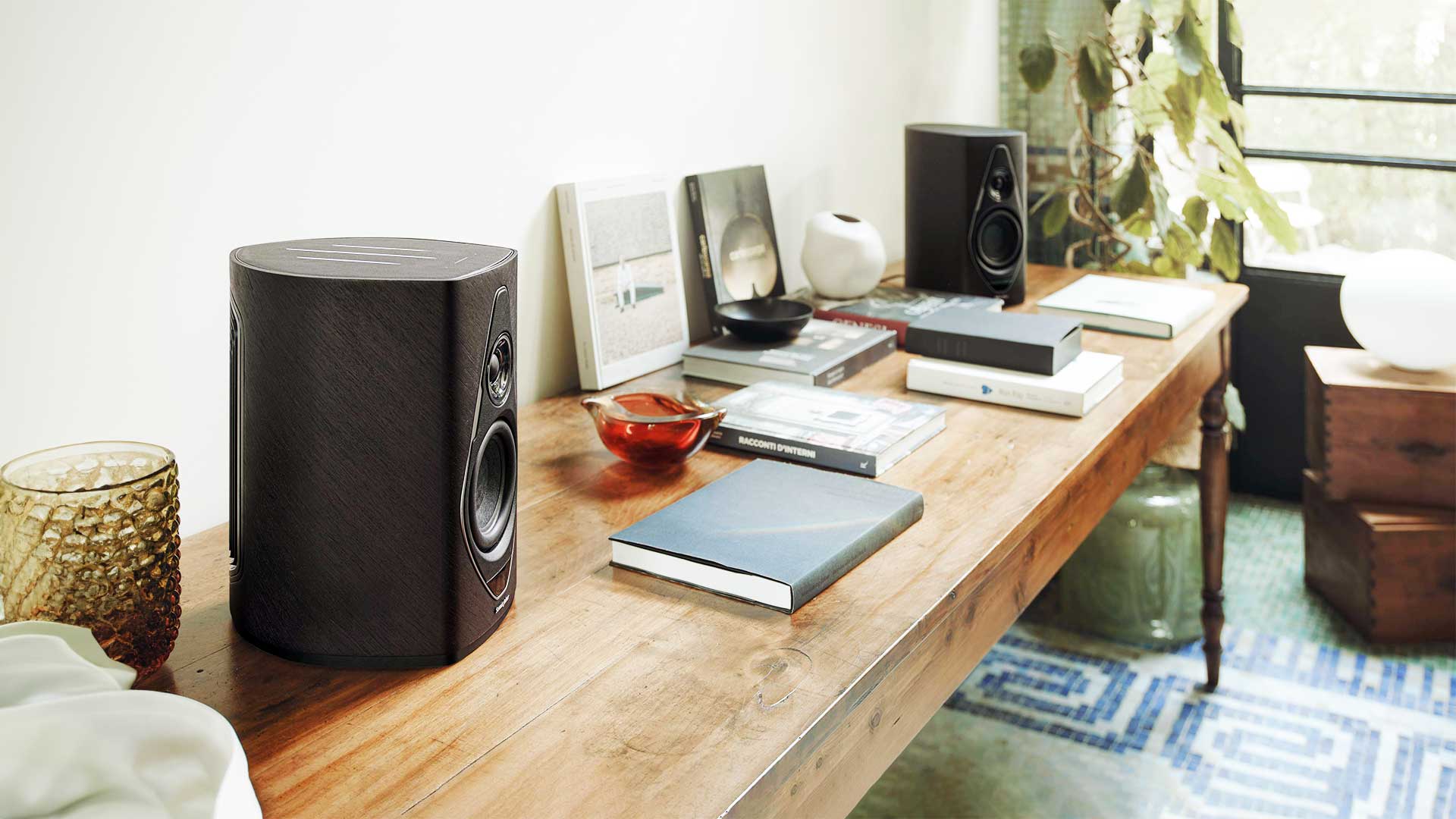
While we thought this bass performance remarkable, if it’s not quite extending to the bottom of your latest CloZee Future Bass collection, you could always run an active subwoofer from the master’s RCA socket.
We tried this when using the Duettos in one of our TV systems, where we spent several weeks listening to all TV and movies through the Duettos. They are a stunning pair of active speakers for this purpose. And they really don’t need a subwoofer. While the sub and Duettos did prove an impressive combination when rumbling away the SFX in AppleTV+’s Foundation, say, keeping the subwoofer permanently in circuit made network news stings rather too exciting in their bursts of energy, and ramped the intensity of tension in The Curse Of Oak Island to anxiety-inducing levels.
We preferred the Duettos alone. Their balance for TV was great for either daytime speech or night-time drama; the bass level of the Duettos suits movie soundtracks perfectly, and of course they are ready and waiting with delicious music whenever you remember to turn the TV off.
Talking of which, the Duettos do encourage you to turn the TV off, and not only to hear their music. When you have a TV connected via HDMI, turning off the TV will turn off the Duettos (via CEC, HDMI’s built-in control system), just as turning on the TV will also turn on the Duettos and (usually) pre-select the HDMI input.
We kept hidden one usage scenario glitch, however – if you walk away or leave the TV silent, the Duettos power down on their own after not very long. If the TV is still on, do not then power the Duettos back up using their remote! For some reason they then didn’t know where they were. Instead, turn off the TV, pause a moment then power the TV back up again, thereby waking the Duettos up together with the TV again. This dissociation may happen all the time for those who attach the Duettos via HDMI to a desktop computer monitor, where audio will not be constant. To fix this, it might be good to add an option to defeat the Duetto’s timed auto-standby, perhaps via some later firmware update.
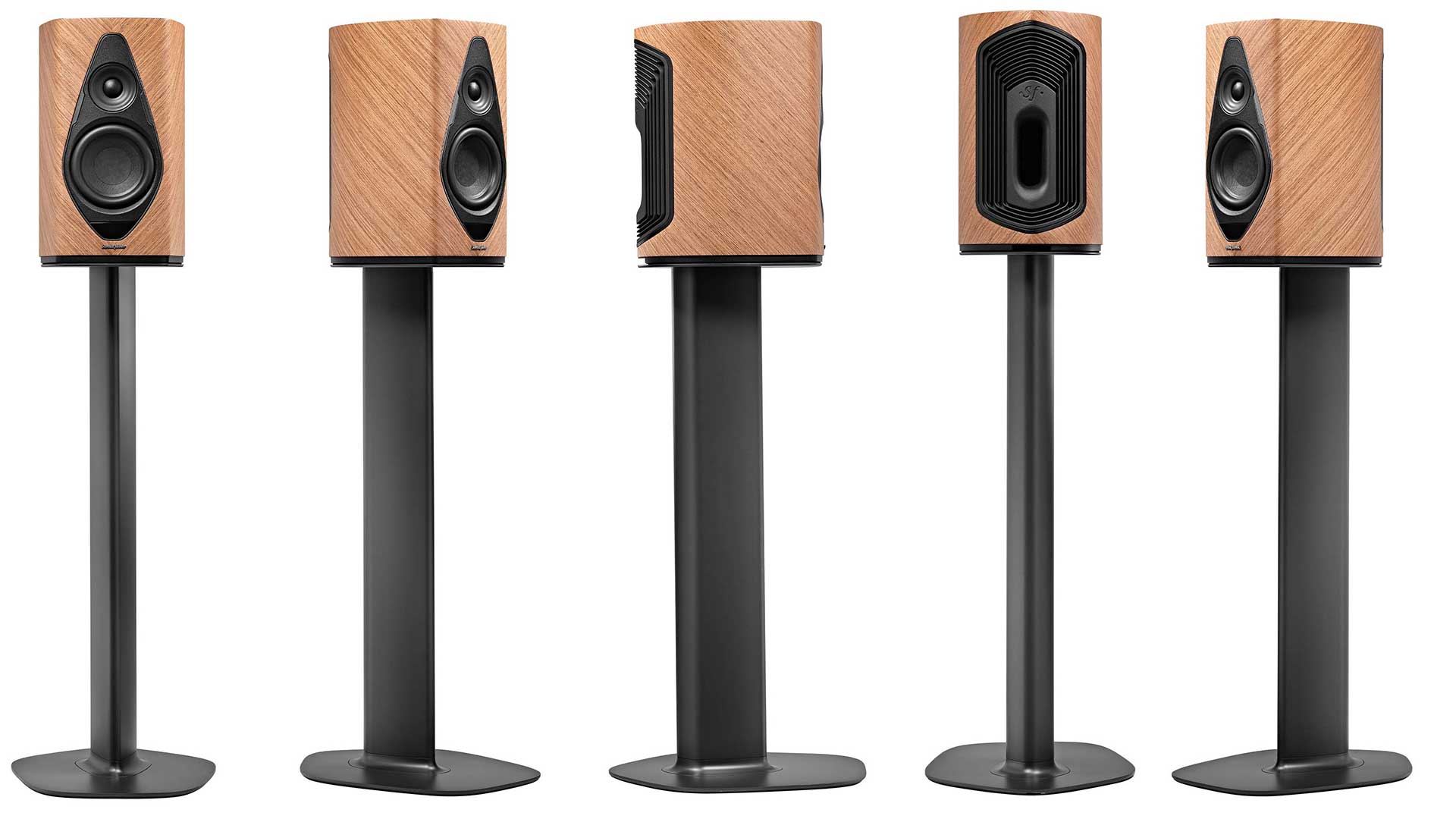
Other than that, the only issue we experienced was that early glitching in the first room, which might have been a TV issue, even though weird balance issues were occurring on Tidal streams too. Yet in the second half of our testing, the glitching did not reoccur. We mention it mainly in case it’s common during set-up, and other users may be reassured that we experienced this only temporarily. Was the UWB finding its path and settling in? Doesn’t seem likely; we asked our contacts at Spark Microsystems in Canada, providers of the UWB technology here, for their opinion.
"UWB operates in the 3-9GHz spectrum," they replied. "Because of physics, signals in this range of frequencies as prone to blocks. Non-line-of-sight performance will vary depending on location and conditions. Water and body (which is mostly water!) are good examples of strong blocks."
However, they also point out that the many reflections in a room typically help with body blocks, enabling the signal to reach the receiver from various angles.
Hence UWB should work well as a short-range communication channel with excellent bandwidth and very low latency, says Spark. "These are enablers to the Sonus Faber product because they allow transmission of high-quality uncompressed audio, eliminating latencies."
And interestingly Spark doesn't recommend USB through walls. "While the signal will travel through simple sheetrock walls, we do not recommend extending the channel to multiple rooms," they told us, also noting that regulatory requirements limit transmit power, and this limits range.
So while we had a perfect experience in one room, the issues elsewhere with blocking mean that to our minds, the merits of the UWB link were not entirely proven here.
It succeeded in one important way, however – latency, or lack of it. Wireless speakers that are not connected by a cable often cause a small delay through transmission, which can show up as sync issues when watching video. Not only did we have no sync issues with the Duettos, we didn’t even think about it, which is very rare. UWB’s very low latency might be doing some of the heavy lifting there.
We were a little divided on the remote control. It’s easy to lose, being small and entirely black. You have to point it quite tightly at the bottom of the speaker, and the buttons are a bit spongy to use: you must firmly press the centre of each button where the actual stem sits. And as noted, we’d gladly accept a larger size of remote with room for dedicated buttons to select at least the three physical inputs and the EQ options.
Yet the missus announced this was her favourite remote control in the whole house, because the buttons are so flat and it’s easy to wipe clean – a worthy point in these days of viral particles. So let’s call that evens. We’ll pass over how she characterised the diagonal speaker baffles, but the Duettos come with removable fabric grilles, also diamond-shaped. We much prefer their look with the grilles off.
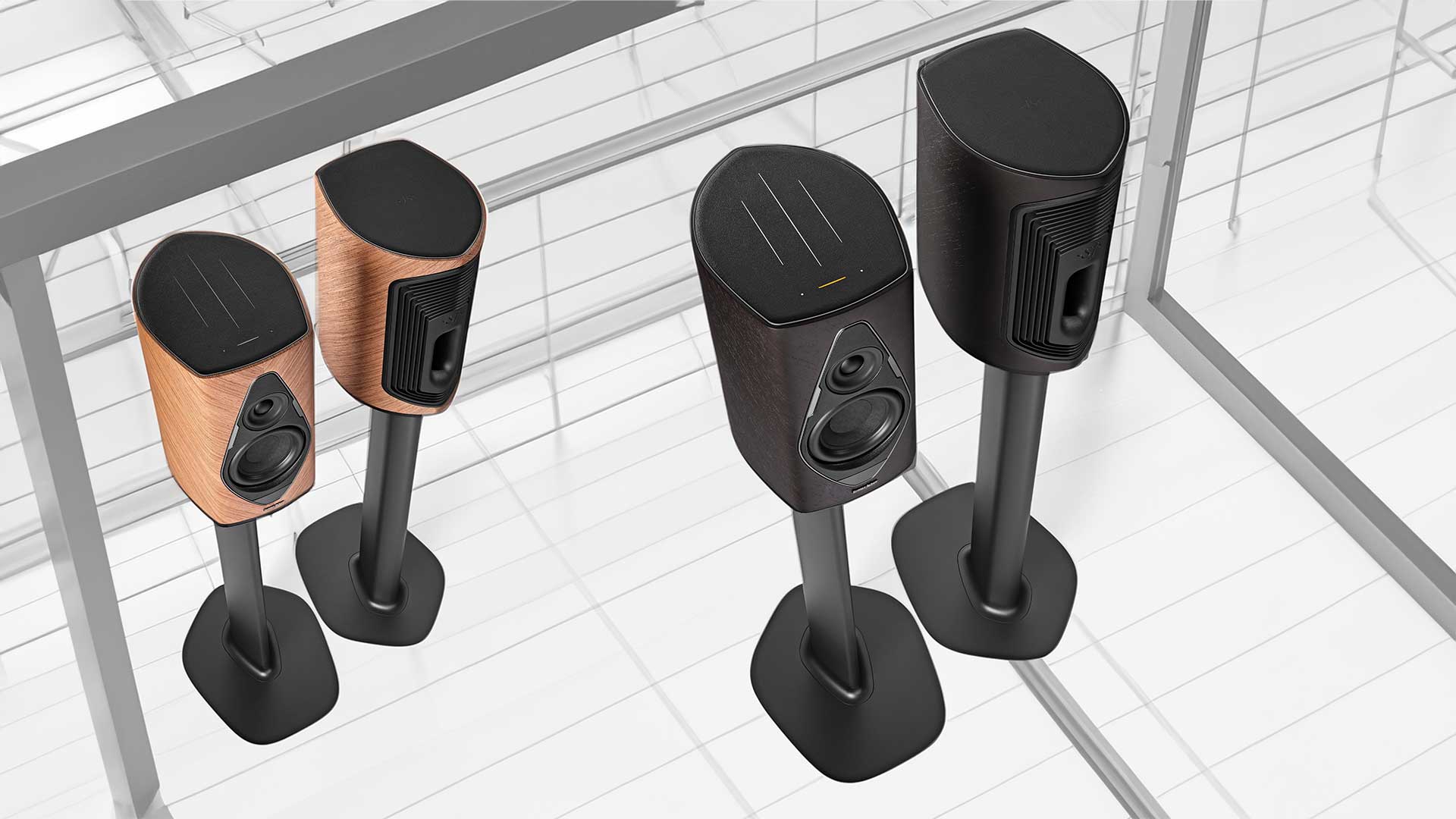
Verdict
The Duetto speakers sound fantastic, and they nail the active speaker brief in a highly consumer-friendly way – so simple that the Duettos can be sold to the same buyers as the all-in-one Omnia as the simplest of hi-fi systems, here two boxes instead of one, and delivering ease of use (once the app arrives with input selection and EQ) wedded to a quality of sound that is not only real hi-fi but also real value – yes, even up at their not-insubstantial pricing, considering you get the amps and streaming all included with the speakers.
What your money gets you is a real hi-fi system to deliver some powerful entertainment, yet in a scenario that is kept thrillingly simple to connect and operate. In fact, in a nutshell, you might say that the Duettos simply achieve the sound of Sonus Faber, perhaps with an injection of steroids, and now wireless.

Jez is the Editor of Sound+Image magazine, having inhabited that role since 2006, more or less a lustrum after departing his UK homeland to adopt an additional nationality under the more favourable climes and skies of Australia. Prior to his desertion he was Editor of the UK's Stuff magazine, and before that Editor of What Hi-Fi? magazine, and before that of the erstwhile Audiophile magazine and of Electronics Today International. He makes music as well as enjoying it, is alarmingly wedded to the notion that Led Zeppelin remains the highest point of rock'n'roll yet attained, though remains willing to assess modern pretenders. He lives in a modest shack on Sydney's Northern Beaches with his Canadian wife Deanna, a rescue greyhound called Jewels, and an assortment of changing wildlife under care. If you're seeking his articles by clicking this profile, you'll see far more of them by switching to the Australian version of WHF.
